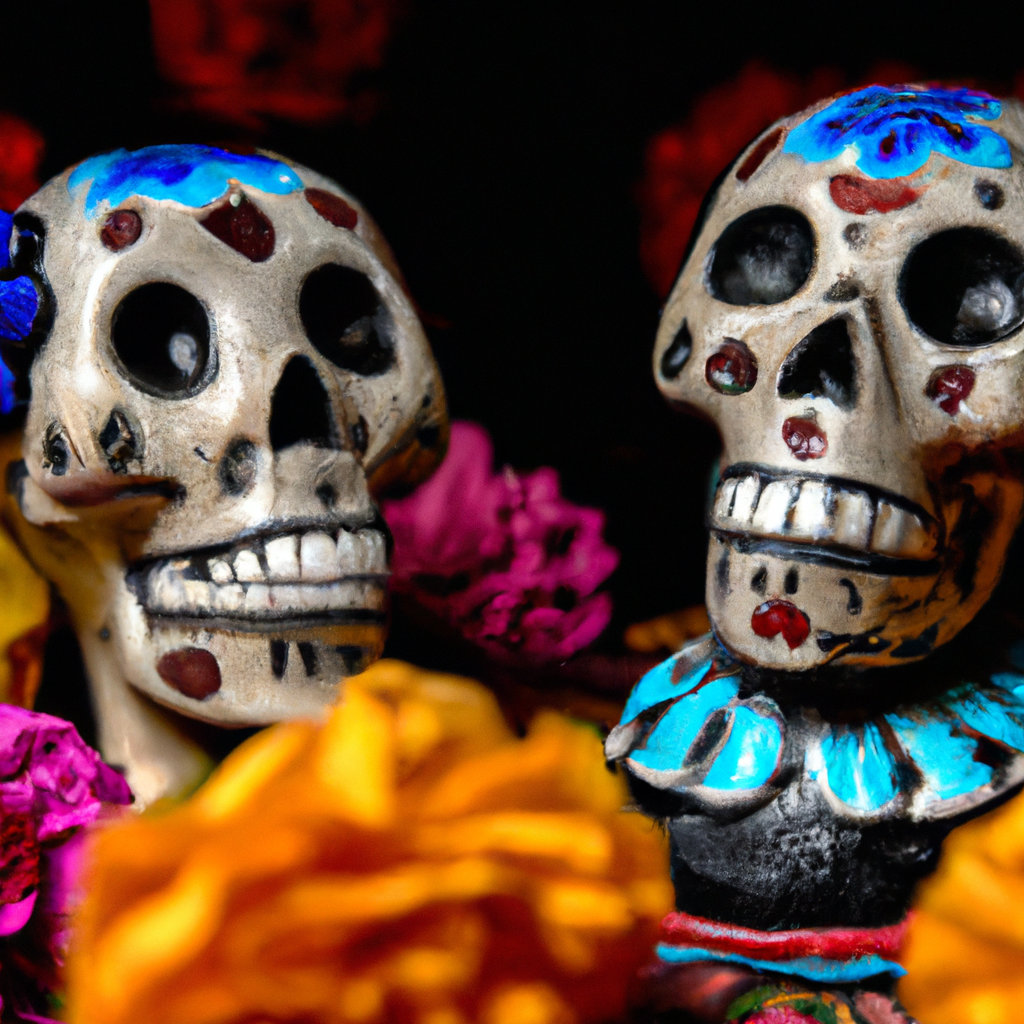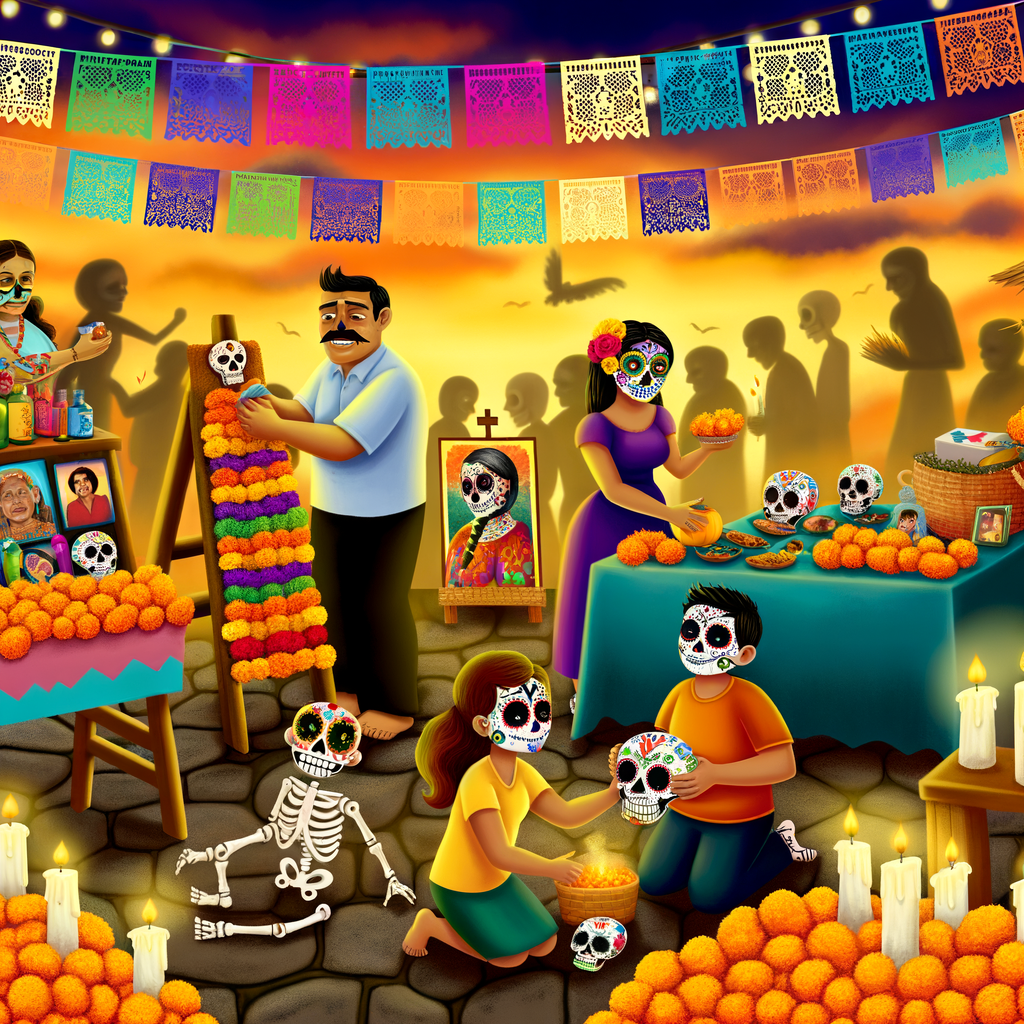Every year, Mexico comes alive with vibrant colors, intricate altars, and spirited celebrations as communities honor the longstanding traditions of the Day of the Dead. This ancient holiday, rooted in indigenous beliefs, offers a unique opportunity to delve into Mexico’s rich history and cultural heritage. Join us as we explore the fascinating customs and rituals of this beloved Mexican tradition, inviting you to discover the beauty and significance of the Day of the Dead.
Exploring the Origins and Symbolism of Day of the Dead Celebrations
One of the most colorful and vibrant celebrations in Mexico is the Day of the Dead, or “Dia de los Muertos.” This traditional holiday, celebrated on November 1st and 2nd, is a time to honor and remember loved ones who have passed away. It is a unique blend of indigenous Aztec rituals and Catholic traditions, creating a beautiful and meaningful cultural event.
The origins of the Day of the Dead date back to ancient Mesoamerican civilizations, such as the Aztec, Maya, and Toltec cultures. These civilizations believed in an afterlife and would honor their deceased ancestors with elaborate rituals and offerings. When the Spanish conquistadors arrived in Mexico in the 16th century, they introduced Catholicism to the indigenous people. Over time, the traditional indigenous practices merged with Catholic customs to create the modern Day of the Dead celebration.
Symbolism plays a significant role in the Day of the Dead festivities. One of the most iconic symbols is the calavera, or sugar skull, which represents the cycle of life and death. Altars, or ofrendas, are also a central part of the celebration, adorned with marigold flowers, candles, papel picado (colorful paper decorations), and favorite foods and drinks of the deceased. These altars serve as a way to welcome the spirits of the departed back to the world of the living for a brief visit.
Traditional Altars: A Fascinating Insight into Mexican Culture
The Day of the Dead, known as Día de los Muertos in Spanish, is a vibrant and colorful Mexican tradition that honors deceased loved ones. Central to this tradition are the traditional altars, or ofrendas, that are created to welcome the spirits of the departed back to the world of the living. These altars are a fascinating insight into Mexican culture, showcasing a unique blend of indigenous beliefs and Catholic customs.
The altars are typically adorned with an array of symbolic items that hold special meaning. Marigold flowers, known as cempasúchil, are used to guide the spirits back to the altar with their vibrant color and strong scent. Other common elements found on traditional altars include papel picado (intricately cut tissue paper), candles, sugar skulls, and the favorite foods and drinks of the deceased. Each item on the altar serves a specific purpose, collectively creating a visually stunning and deeply meaningful tribute.
One of the most important elements of a traditional altar is the photograph of the departed loved one. This serves as a focal point for the altar, allowing family members to connect with the spirit of the deceased through their likeness. Families also place personal items belonging to the deceased, such as clothing or jewelry, on the altar to create a sense of familiarity and comfort for the spirits. By creating these elaborate altars, families come together to honor their ancestors and celebrate the cycle of life and death in a beautiful and poignant way.
Participating in Day of the Dead Festivities: Dos and Don’ts
When visiting Mexico during the Day of the Dead celebrations, it is important to respect and honor the traditions of this cultural event. To fully immerse yourself in the festivities, here are some dos and don’ts to keep in mind:
Dos:
- Do learn about the significance of the ofrendas (altars) and take the time to admire them with reverence.
- Do try traditional Day of the Dead foods such as pan de muerto (bread of the dead) and calaveras de azucar (sugar skulls).
- Do participate in the candlelight vigils and processions, showing respect for the deceased.
- Do interact with locals and ask questions about their customs and beliefs surrounding the Day of the Dead.
Don’ts:
- Don’t treat the festivities as a tourist attraction; instead, approach them with cultural sensitivity and an open mind.
- Don’t take photos of altars or individuals without permission, as this can be seen as disrespectful.
- Don’t wear Halloween costumes or face paint, as this is not in line with the solemnity of the occasion.
- Don’t make light of death or use humor in a way that may offend those observing the Day of the Dead.
Honoring Departed Loved Ones: Meaningful Ways to Connect During the Celebration
The Day of the Dead, or Día de los Muertos, is a vibrant and colorful celebration in Mexico that honors deceased loved ones. This tradition, rooted in Mexican culture and heritage, is a unique way to remember and celebrate the lives of those who have passed on.
During the Day of the Dead festivities, families create elaborate altars, or ofrendas, adorned with candles, marigolds, photos of their departed loved ones, and their favorite foods and drinks. These altars serve as a welcoming space for the spirits to return and enjoy the offerings left for them.
One of the most iconic symbols of the Day of the Dead is the sugar skull, or calavera de azúcar, which is a colorful and ornately decorated skull made of sugar. These skulls are often personalized with the name of the deceased loved one they are meant to honor. Another common tradition is the making of papel picado, intricately cut tissue paper banners that decorate the altars and streets during the celebration.
As we have delved into the rich and vibrant traditions of the Day of the Dead in Mexico, we have seen how this annual celebration serves as a poignant reminder of the enduring connection between the living and the dead. From colorful altars adorned with marigolds and sugar skulls to lively processions through the streets, the Day of the Dead offers a unique glimpse into the cultural heritage of Mexico. So next time you find yourself in this beautiful country during the first days of November, take the time to immerse yourself in the festivities and pay homage to the departed souls who are honored during this special time. Embrace the customs, savor the flavors, and remember that, in the end, death is not the end but merely a part of the cycle of life.
